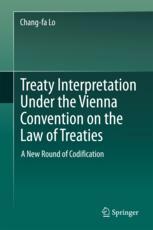

Most ebook files are in PDF format, so you can easily read them using various software such as Foxit Reader or directly on the Google Chrome browser.
Some ebook files are released by publishers in other formats such as .awz, .mobi, .epub, .fb2, etc. You may need to install specific software to read these formats on mobile/PC, such as Calibre.
Please read the tutorial at this link: https://ebookbell.com/faq
We offer FREE conversion to the popular formats you request; however, this may take some time. Therefore, right after payment, please email us, and we will try to provide the service as quickly as possible.
For some exceptional file formats or broken links (if any), please refrain from opening any disputes. Instead, email us first, and we will try to assist within a maximum of 6 hours.
EbookBell Team

4.8
24 reviewsThis book is devoted to an idea of a second round of codification of certain new rules for treaty interpretation. Currently, treaty interpretation is guided by Articles 31 through 33 of the Vienna Convention on the Law of Treaties (VCLT). The fundamental rule is that a treaty shall be interpreted in good faith in accordance with the ordinary meaning to be given to the terms of the treaty in their context and in the light of its object and purpose. These rules lay the foundation for treaty interpretation. They represent the first round of codification of the contents of some previous customary international law rules. The book argues that the current rules are overly simplified. After almost fifty years of codification of the VCLT, the codified text in it is practically insufficient in addressing some traditional treaty interpretation issues (such as the interpretation involving time factors or technology development) and in coping with some new development of international law (such as the diversification and fragmentation of international treaties) and new challenges (such as the need of coordination between different treaties and the need of introducing external values, including human rights, into a treaty through treaty interpretation process). The book further argues that there is a need to have a second round of codification so as to incorporate new rules into the VCLT to be followed by treaty interpreters to make treaty interpretation more consistent and transparent, and more in line with the shared value of international community. The book proposes the contents of certain new rules to be considered as the new codified rules for treaty interpretation.